For maps with up to four variables, it is a matter of taste, which variable is put at which side. However, Mahoney maps as extension of Karnaugh maps for five and more variables do require a certain ordering along the side.
Expression for the following examples:
abcd!e + abc!de
Five-input Mahoney map:

Equivalent Karnaugh map:
de de
00 01 11 10 00 01 11 10
abc +---+---+---+---+ abc +---+---+---+---+
000 | 0 | 0 | 0 | 0 | 001 | 0 | 0 | 0 | 0 |
+---+---+---+---+ +---+---+---+---+
010 | 0 | 0 | 0 | 0 | 011 | 0 | 0 | 0 | 0 |
+---+---+---+---+ +---+---+---+---+
110 | 0 | 0 | 0 | 0 | 111 | 0 | 1 | 0 | 1 |
+---+---+---+---+ +---+---+---+---+
100 | 0 | 0 | 0 | 0 | 101 | 0 | 0 | 0 | 0 |
+---+---+---+---+ +---+---+---+---+
It is always possible to swap variables as shown here:

de de
00 01 11 10 00 01 11 10
abc +---+---+---+---+ abc +---+---+---+---+
000 | 0 | 0 | 0 | 0 | 001 | 0 | 0 | 0 | 0 |
+---+---+---+---+ +---+---+---+---+
010 | 0 | 0 | 0 | 0 | 011 | 0 | 0 | 0 | 0 |
+---+---+---+---+ +---+---+---+---+
110 | 0 | 0 | 0 | 0 | 111 | 0 | 1 | 0 | 1 |
+---+---+---+---+ +---+---+---+---+
100 | 0 | 0 | 0 | 0 | 101 | 0 | 0 | 0 | 0 |
+---+---+---+---+ +---+---+---+---+
Here you can find a nice online-tool to draw and simplify Karnaugh-Veitch/Mahoney maps.

